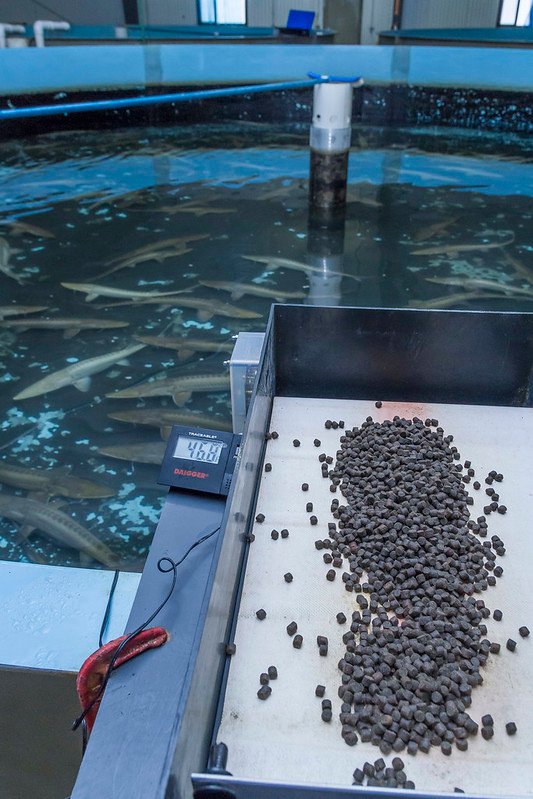
Smart aquaculture harnesses technology to create a controlled environment that continuously monitors and optimizes crop conditions, allowing the aquaculture industry to gain better control.
A study published by scientists from Pdpm Iiitdm Jabalpur, Umeå University, and the University of Technology Sydney proposes an intelligent freshwater recirculating aquaculture system based on the Internet of Things (IoT) to enhance aquaculture practices. This innovative system integrates sensors, actuators, and data analysis algorithms to promote precision aquaculture.
The Significance of Smart Aquaculture
Smart aquaculture is a holistic approach to the industry, incorporating cutting-edge technology to optimize crop growth. It enables real-time monitoring and control of key parameters, reducing the risk of poor harvests and ensuring optimal yields.
By employing intelligent systems, aquaculturists can better manage their crops, creating rearing conditions with a lower likelihood of disease outbreaks, improved food conversion rates, and enhanced production projections, ultimately leading to greater profitability.
Integration of IoT-Based Aquaculture Systems
A promising solution to address these challenges is the implementation of intelligent freshwater recirculating aquaculture systems based on IoT. These systems are designed to revolutionize aquaculture by improving control, monitoring, and optimization of water parameters in aquaculture environments.
Key Features of the Proposed System
The system proposed by the researchers has three important design aspects: physical configuration, communication network, and design logic:
- Physical Configuration: Devices with sensors and actuators are integrated. Sensors monitor water parameters, and actuators control the environment to ensure it is suitable for aquaculture.
- Communication Network: It manages data between physical devices and controls the flow of data. The network design includes integrated networks between edge, fog, and gateway devices.
- Design Logic: This encompasses data visualization and interactive control using the Django framework.
The Role of Data Analysis
One of the most crucial elements of this system is an intelligent data analysis algorithm. This algorithm plays a pivotal role in monitoring and maintaining the freshwater aquaculture environment. It analyzes the data collected from sensors to derive relationships between water parameters and identify relative changes over time.
Stay Always Informed
Join our communities to instantly receive the most important news, reports, and analysis from the aquaculture industry.
The M5 Model Tree Algorithm
In experimental evaluations, the M5 model tree algorithm was found to have the highest accuracy in monitoring relative changes in water parameters. This algorithm not only ensures precise monitoring but also provides valuable insights to farmers.
Conclusion
Smart aquaculture, when combined with IoT-based aquaculture systems, offers a transformative solution to the challenges facing the aquaculture industry. “We propose an IoT system for aquaculture monitoring and maintenance. The proposed system design includes physical design, a communication network, and logic,” concluded the researchers.
By improving control, monitoring, and optimization of crop and aquaculture environments, these technologies contribute to increased crop production and the financial stability of small-scale aquaculturists.
In conclusion, the integration of smart aquaculture and IoT-based aquaculture systems is essential to address the pressing issues affecting the aquaculture industry worldwide. As these technologies continue to advance, we can expect a brighter and more sustainable future for aquaculture.
The study was funded by the Department of Science and Technology (DST) of the SEED division of India.
Reference (Open Access)
M. Singh, K. S. Sahoo, and A. H. Gandomi, “An Intelligent IoT-Based Data Analytics for Freshwater Recirculating Aquaculture System,” in IEEE Internet of Things Journal, doi: 10.1109/JIOT.2023.3298844.
Editor at the digital magazine AquaHoy. He holds a degree in Aquaculture Biology from the National University of Santa (UNS) and a Master’s degree in Science and Innovation Management from the Polytechnic University of Valencia, with postgraduate diplomas in Business Innovation and Innovation Management. He possesses extensive experience in the aquaculture and fisheries sector, having led the Fisheries Innovation Unit of the National Program for Innovation in Fisheries and Aquaculture (PNIPA). He has served as a senior consultant in technology watch, an innovation project formulator and advisor, and a lecturer at UNS. He is a member of the Peruvian College of Biologists and was recognized by the World Aquaculture Society (WAS) in 2016 for his contribution to aquaculture.




